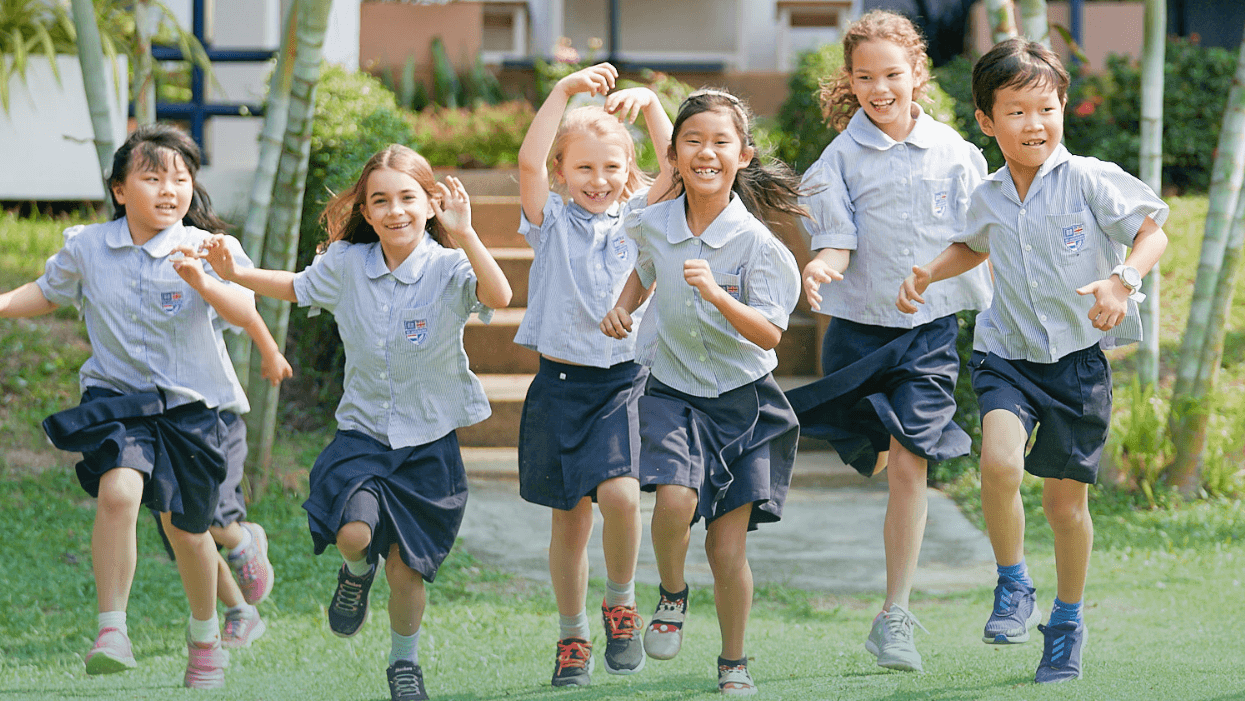Thinking about moving your child from a Thai school to an international school? It’s important to understand the key differences and how to prepare for this significant step. In this article, we break it all down for how to transfer from Thai school to international school. And explore how St. Andrews Green Valley supports students through the transition.
- Thai vs International Schools: Thai schools focus on academic achievement, structure, and Thai-language instruction, while international schools emphasise holistic development, smaller class sizes, English instruction, and multicultural environments.
- Preparing Your Child: Build English proficiency, develop independent learning skills, and foster cultural adaptability. Research schools carefully, understand the admission process, and support your child emotionally and socially throughout the transition.
- How Green Valley Supports: St. Andrews Green Valley offers tailored English language support (EAL and LEAP), a diverse and inclusive community, and Thai language and cultural programmes to ensure a smooth and confident transition for Thai students.
Key Differences Between Thai and International School
Although both Thai and international schools are located in Thailand, there are significant differences between the two. These differences ranging from cultural values to the educational curriculum. Let’s take a closer look at the key differences below before transfer your kids to international school.
Curriculum and Teaching Methodologies
Thai schools tend to have larger class sizes and a more traditional, structured environment, with a strong focus on academic achievement. Extracurricular activities are available but usually play a supporting role. School culture reflects Thai values, emphasising respect for authority, discipline, and community.
In contrast, international schools usually have smaller class sizes and a more diverse, multicultural setting. The learning environment focuses on the whole child—blending academic achievement with creativity, extracurricular activities, global perspectives, and emotional wellbeing.
Language of Instruction
Local schools typically teach in Thai, reflecting the national language and cultural foundation. English is usually taught as a subject, with other foreign languages offered as optional courses.
Whereas, International schools primarily use English as the language of instruction. Thai is usually taught as a second language, while other foreign languages may be offered as elective subjects depending on the school’s programme.
School Culture and Environment
Thai schools often reflect the values of the wider culture. Classrooms tend to be more structured, with larger groups of students and a strong emphasis on academic results. Discipline and respect for authority are central to daily school life. While extracurricular activities are offered, they usually take a back seat to core academic learning.
International schools usually have smaller class sizes, which means students get more personalised attention. The environment is often shaped by a mix of cultures, creating a community that’s both diverse and inclusive. Learning goes beyond the classroom. It combines academics with creativity, extracurricular opportunities, and a strong focus on wellbeing and social-emotional development.
Steps to Prepare Your Child Before Transfer to International School
Moving from a Thai school to international school is a big change for you and your child. It might feel unfamiliar at first, and that’s completely normal. Here are some simple ways you can help them adjust with confidence.
Prepare Skills They Need
- Build English Confidence: One of the most important things when moving from Thai school to international school is language skill. Help your child get comfortable using English in everyday situations. That might mean signing up for a short language course, working with a tutor, or simply chatting in English at home now and then. It doesn’t have to be perfect. What matters is building confidence bit by bit.
- Encourage Independent Thinking: International schools often place more emphasis on curiosity and self-directed learning. You can start building those habits at home. The easiest step is to ask your child what they think. Encourage them to solve everyday problems on their own. Finally, give them space to make small decisions. These moments help them grow more confident and capable.
- Explore Different Cultures Together: When transferring to international school, the whole environment changed. Watch shows in other languages, attend local events, or simply talk about how people live in other parts of the world. These little things help children become more open-minded and adaptable in a diverse school setting.
Navigating the Application and Admission Process
- Start with the Right Fit: Choosing the right school is about where your child will feel supported and inspired. Think about how they learn best, what kind of environment they’ll thrive in, and what matters most to your family. Curriculum, class size, location, and extracurriculars are all part of the picture.
- Know What They’re Looking For: Each school has its own admissions process, so take time to understand the requirements. Some may ask for academic records, English assessments, or interviews—others might focus more on student potential and fit.
- Get the Paperwork Ready: Have key documents prepared in advance. This usually includes school transcripts, recommendation letters, and official ID copies. It saves time and helps you stay organised throughout the process.
Supporting Your Child Through the Transition
- Emotional and Social Support: Maintain open communication with your child, addressing their concerns and providing reassurance during the transition.
- Encouraging Participation in Extracurricular Activities: Involvement in clubs and sports can help your child build friendships and integrate into the school community.
- Monitoring Academic Progress: Regularly check in with teachers and school counselors to ensure your child is adjusting well academically.
How St. Andrews International School, Green Valley Supports Your Child Through the Transition
We understand how important a smooth transition from Thai school to international school is when children take this significant step. At St. Andrews International School, Green Valley, we know that moving to a new learning environment can be a big step. That’s why we offer the right support from the start—so your child can settle in with confidence.
Language Support Programmes
We understand that not every child arrives fluent in English. That’s why we offer two dedicated programmes to help them catch up and feel comfortable:
- EAL (English as an Additional Language) for students in Years 1–4
- LEAP (Learning English with Accelerated Progress) for students in Years 5–9
Both programmes provide focused, personalised support for non-native speakers—helping them build the language skills they need to take part fully in class, make friends, and thrive in an English-speaking environment.
Inclusive and Diverse Community
With a student body representing over 30 nationalities, St. Andrews fosters an inclusive environment that celebrates cultural diversity. This multicultural setting helps Thai students integrate smoothly, promoting intercultural understanding and global citizenship.
Thai Language and Cultural Programmes
Even when moving from Thai school to international school, it matters to stay in touch with the local setting. To ensure Thai students maintain their cultural heritage, the school offers dedicated Thai language instruction and cultural activities. These programmes support students in preserving their native language skills and understanding of Thai culture while engaging in an international curriculum.
Conclusion
Moving from a Thai school to international school is a meaningful transition. It is the one that opens up new academic and personal growth opportunities for your child. The key important things of how to transfer from Thai school to international school are building the right mindset, developing essential skills like English proficiency and independent learning, and supporting your child emotionally as they adapt to a new environment.
At St. Andrews International School, Green Valley, we make this journey smoother with structured support tailored to each child’s needs. From targeted language programmes like EAL and LEAP to our inclusive, multicultural community and culturally rooted Thai programmes, we ensure every student feels confident, understood, and ready to thrive. Our holistic approach nurtures not just academic success, but also emotional wellbeing and social development. We equip your child with the tools they need to succeed in a globalised world.With the right preparation at home and the right environment at school, your child’s transition from Thai school to international school can be a positive and empowering experience that sets the foundation for lifelong learning and international-mindedness.







